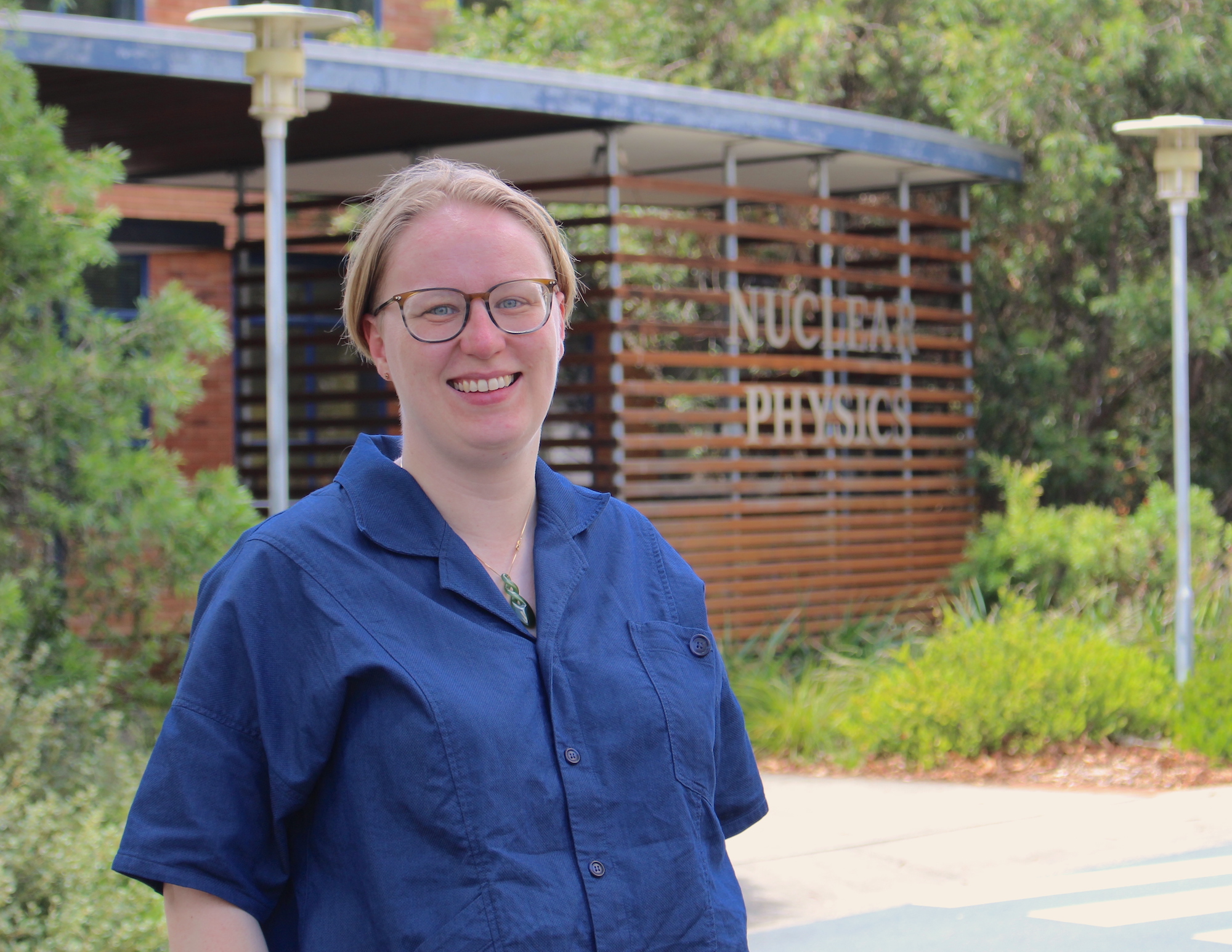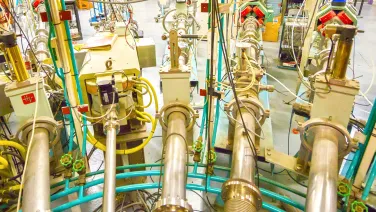Even when nuclei don’t touch, there’s give and take
When nuclei collide, protons and neutrons zip back and forth between them, even if they stay a significant distance apart and don’t touch.
Physicists measured nuclei bouncing off one another, without sufficient energy to overcome the electrostatic repulsion between the two positively charged nuclei, and found that after the collision, the nuclei had turned into different elements, thanks to changes in proton and neutron number.

"The nuclei are reaching out and touching each other outside the coulomb barrier," said Dr Kaitlin Cook, first author of a paper in Nature Communications reporting the findings, and a member of the Department of Nuclear Physics and Accelerator Applications.
"There’s an explosion of mass and charge transfer – we measured 90 different isotopes formed after collisions in which the nuclei do not touch."
The measurements are crucial information in the quest to find a consistent theory to describe fusion: models assuming billiard-ball like collisions in which nuclei collide basically unscathed are unable to reproduce experimental data across a wide range of energies.
Especially puzzling, models cannot predict behaviour for energies above the coulomb barrier, at which it is assumed behaviour would be classical, and avoid many of the complications of quantum theory.
"We’re improved the understanding of how fusion works. It’s much more complex than we expected, and throws up questions about the fundamentals of quantum mechanics," Dr Cook said.
The project has taken over a decade to come to fruition, through the efforts of several generations of PhD students – the data required extremely complex analysis.
"Once we had the data, actually understanding what it was telling us took a lot of thought. The ideas had to simmer for a while," Dr Cook said.
The experiments, using a beam of calcium nuclei sent into a lead target, were conducted by PhD student Maurits Evers at Legnaro National Laboratory in Italy and analysed by PhD student Dom Rafferty . The team used Legnaro’s PRISMA Spectrometer, taking advantage of its capability to measure strongly reflected nuclei – in this experiment particles that had been deflected 115 degrees from their original path.
The beam energy was gradually increased, and at around 92 percent of the coulomb barrier energy, at which the nuclei would still be about about 1.9 femtometers short of peak of the barrier, “everything exploded,” Dr Cook said. Above this energy the reflected calcium was changed into all sorts of nuclei, from as light as aluminium, up to as heavy as titanium.
The results give an insight into why modelling had been so hard: theory needs to account for the charge and mass changing significantly before the projectile actually touches the target.
"Now we have these new observations, I hope theorists will be able to model fusion much more reliably. There is a remarkable amount of complexity that hasn’t been included in the models," Dr Cook said.
"Understanding fusion is crucial in the quest to use fusion to create new superheavy elements on the periodic table."
"And it’s not just superheavy elements - every atom around us that’s heavier than hydrogen exists thanks to a whole chain of nuclear reactions, including fusion – understanding the fundamentals of nuclear fusion is helping us understand our origins."
This article was first published by ANU Research School of Physics.



